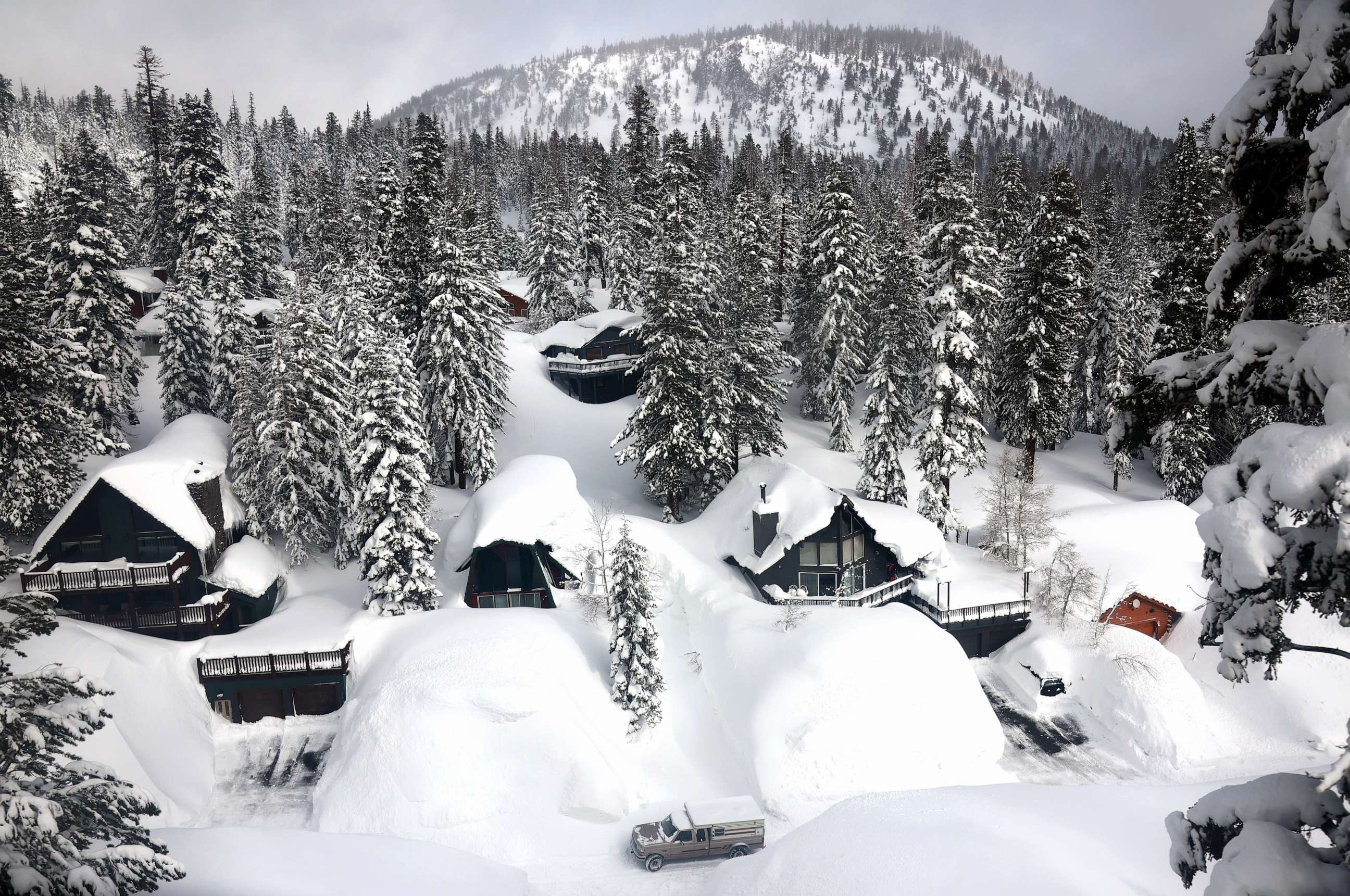Most of eastern US, California coast under flood threats this spring, NOAA says
Flooding of the Mississippi River and melting of heavy snowpacks are to blame.
Meteorologists are predicting flood threats for a large portion of the U.S. this spring.
About 44% of the U.S. is at risk for flooding, Ed Clark, director of National Oceanic and Atmospheric Administration's National Water Center, told reporters on Thursday.

There is a risk of flooding in most of the eastern half of the U.S. including most of the Mississippi River Basin, NOAA said. Currently, nearly 1.5 million people on Mississippi River are under major flood threat this spring, John Gottschalck, chief of operational prediction branch at NOAA’s Climate Prediction Center, a division of National Weather Service, told ABC News.
In the West, the historic snowpack along the Sierra Nevada mountain range, combined with elevated soil moisture, is heightening the potential for spring floods across much of California's coast.
Two weather patterns came together to create such extreme winter precipitation over California, including the jet stream extending further south and an increase in available moisture in the Pacific due to a reoccurring phenomena known as Madden Julian Oscillation, an eastward moving disturbance of clouds, rainfall, winds and pressure, Gottschalck said.
Most residents near the Sierra Nevada range don't live where major snow melt and flooding are forecast, Clark told ABC News.

Near record snowfall in the upper Midwest this past winter will also contribute to the flooding, Gottschalck said.
The snow melt will bring much-needed water to California and the Great Basin. The reservoirs that depend on the Colorado River, such as Lake Powell and Lake Mead, are currently at record low water levels following years of drought.

With the spring snowmelt, the water in Lake Powell is expected to rise 34 feet, Clark said. Because the lake is at record low level for this time of the year, it would only fill up to 36% capacity, Clark said.
Climate change is driving both wet and dry extremes, NOAA administrator Rick Spinrad said.
Moderate to exceptional drought coverage across the U.S. is at its lowest since August 2020 and is likely to continue improving, or end entirely, across much of California and the Great Basin due to the heavy influx of moisture in recent months.
Extreme to exceptional drought across parts of the southern High Plains will likely to persist through the spring season, with droughts also expected to develop into parts of New Mexico. Across parts of the Northwest U.S. and northern Rockies, drought conditions are also expected to continue. Droughts may develop in Washington state.
The spring wet season is expected to improve drought conditions across parts of the northern and central Plains, while current drought conditions in Florida are expected to improve or be alleviated during the next three months.

A multi-decade drought cannot be reversed with one snowy and rainy reason, Clark said.
"It’s great news that the abnormally wet winter has improved drought conditions, but the risks for flooding in the Missouri and Sierra Nevada and especially the upper Mississippi River Basin are particular concerning," Shana Udvardy, senior climate resilience policy analyst with the Union of Concerned Scientists' climate and energy program told ABC News via email.
Above-average temperatures are likely for much of the southern and eastern half of the U.S. this spring, forecasts show.
For April through June, the greatest chance for above-average temperatures exists from the southern High Plains and northward along the East Coast.

Above-average temperatures are also likely for Hawaii and northern parts of Alaska.
Below-average temperatures are predicted for the central Great Basin and the northern Plains.
NOAA forecasters predict above-average precipitation this spring across the Great Lakes, Ohio Valley and into parts of the mid-Atlantic and Northeast. Below-average precipitation is most likely for the Southwest and parts of the Pacific Northwest.
"With climate change we are seeing wetter wet conditions and drier dry conditions," Udvardy said. "We can’t escape the fact that we simply aren’t prepared. Federal leadership is needed to both slash emissions more deeply and protect people from flooding and other weather extremes."



